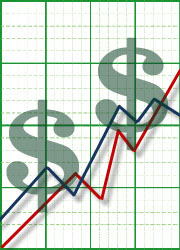Measure Your Bill Collecting Success
Diane Glover
Feb 16, 2023

Credit sales are a fact of business life.
And to keep those accounts from spinning out of control, your company must maintain a delicate balance between the total cost of bad debts and your profit gains.
Your cash manager needs to constantly monitor your total receivables and bad debts. Part of the process involves weighing the benefits of extending credit (more sales) against the costs of maintaining receivables (collection and interest).
If the total cost of bad debt is outflanking the profit gains from increased sales, it’s time to take action. The downside: In many cases, you must match the credit terms and policies of competitors to encourage sales. This is a difficult but necessary part of the balancing act.
To help you stay in control, here are three of the most critical tools to measure collection activity:
Tool #1.
Receivables Ratio. You should hold receivables for the shortest time possible. This boosts the timeliness of payments and maximizes the accounts receivable turnover ratio, or the rate at which you are collecting bills during a given period. To determine the ratio, divide net credit sales by average accounts receivable.
Tool #2.
Aging Schedule. This gives you a bird’s eye view of your receivables and the due dates. It’s a straightforward way of understanding your collection efforts and highlighting overdue bills. The accounts receivable aging schedule typically includes the name of the creditor, the total due and the amounts due in the current month, the previous month, the preceding two months and more than 60 days.
Tool #3.
Average Collection Period. One of the most important measurements is the average number of days it takes to collect a bill. In other words, the average collection period. This is the length of time it takes to convert sales into cash and underscores the relationship between accounts receivable and cash flow.
The longer the collection period, the more you invest in accounts receivable. And a long collection period means less cash available for your company’s own needs.
To calculate the collection period, divide the number of days in the year by the accounts receivables turnover ratio. Or you can take the average accounts receivable and divide that by the average daily sales (net credit sales/days in a year).
The average collection period is commonly used to compare your success at accounts receivable management to that of your industry peers. It can also be used to analyze your collection efforts across various time periods, and determine how well your customers are doing paying their bills when compared with your credit terms.
These are just some of the tools that let you track your company’s success at controlling accounts receivables. Your accountant can help you use these tools as well as other ratios, reports and measurements that can assist you in keeping a handle on credit customers.
More Resources

About The Author
As the Manager of Practice Growth, Diane focuses on the market awareness and growth of Kirsch CPA Group…
Sign Up for Email Updates
Tags
Accounting & Financial News

Tax Law Changes: 10 Provisions Employers Need to Know
The One Big Beautiful Bill Act (OBBBA) includes a number of tax law changes that affect employers.…




